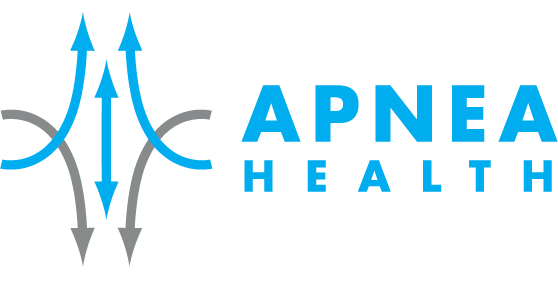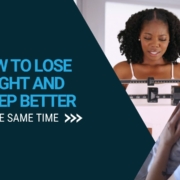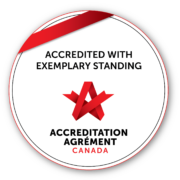How to get used to the CPAP machine
So, you’ve been told you have Sleep Apnea and you need to start using a CPAP machine…
How in the world are you going to be able to adapt to sleeping with this contraption? Don’t despair! I’m here to help you by sharing my top tips on getting used to CPAP.
- Introduction
- Practice Patience
- Practice makes perfect!
- Deal with discomfort right away
- Celebrate the Small (and Big) Successes
- Take an active and positive part in your treatment
- Stay in touch with your respiratory therapist!
Introduction
Since I began working as an RT specializing in sleep disorders at Apnea Health, I’ve helped many patients become more comfortable with their CPAP machines. Patients often arrive at our clinic with positive feedback from a friend, family member or colleague who told them how CPAP treatment has changed their lives, how their adaptation was easy and that from the first night it was a success. I’ll be honest with you, this ease of adaptation is not the norm.
Surely you’re wondering how long it will take for a CPAP to improve your sleep apnea symptoms. An article published by the National Sleep Foundation reports that “most patients will require a period of adjusting to the presence of the CPAP mask … anywhere from a few days to a few weeks.”1 Don’t be alarmed if it’s even longer.
One of our secretaries (who has the benefit of CPAP support every day) took 6 months to sleep through the night without removing the mask. Of course, this is rare, but it does occur. The good news is that she’s been using her CPAP for 5 years now and sleeping through the night. The key to her success was perseverance and patience.
Practice Patience
I always tell my patients to be…(pardon the clichéd pun) patient! Don’t expect miracles overnight. While some people feel benefits after just one night, most take at least a month. Remember that you’ve been experiencing poor sleep quality for a number of years and that it will take more than one night’s sleep before you regain all your energy and feel better.
The key is to go easy on yourself. It will take some time to get used to your new bedfellow. Give yourself a chance to get used to wearing the mask and feeling this new surge of air. Essentially, you need to desensitize yourself to wearing a mask and using a CPAP.
Practice makes perfect!
Doing something you’ve never done before requires some practice. Since you’re new to the mask and the CPAP, I recommend wearing it as much as possible BEFORE bedtime so you have time to get used to it.
Here are a few scenarios to consider as opportunities to train yourself:
- If you take naps during the day, put on your CPAP. What better way to ease into life with a mask? This short term effort will get you accustomed to the long term commitment of sleeping with the mask all night.
- If you have a tendency to be claustrophobic, practice wearing the mask with the CPAP running during the day. This will allow you to get used to the air pressure. You might want to use your CPAP while you watch TV in the living room, read, knit, etc. This will occupy your brain with something else instead of focusing on having a mask on and breathing.
- Wear your CPAP 10-15 minutes before bedtime. Wearing the mask and feeling the air surge when you are awake will allow you to acclimate to it and put yourself in a more relaxed state. As sleep approaches, just close your eyes and drift off…
Deal with discomfort right away
Sleep apnea mask discomfort — this is one of the most searched CPAP phrases on Google and it is no wonder. People might buy a mask online or go to a homecare provider for equipment and then never return for support, but studies prove that “close follow-up, using a nurse-led or respiratory- therapist-led program … is vital for a successful outcome.”2
That’s why my colleagues and I are here to help you!
We know that patients who don’t address small discomforts early on are more likely to abandon treatment. To prevent this, as soon as you experience discomfort with your mask, or problems with the air pressure or humidity, please call us or come into the clinic so we can help you.
Don’t be discouraged. My colleagues and I are experts at troubleshooting CPAP related problems and we have the support and knowledge of our respirologists (sleep doctors) to direct us.
Celebrate the Small (and Big) Successes
- No snoring – (perhaps the biggest success for your longsuffering bed partner!)
- Fewer sleep interruptions
- Fewer visits to the bathroom
- Easier time waking up in the morning
- Fewer or no headaches
- No need to nap in the daytime
You may not realize it, but while you are achieving these smaller, more measurable successes, you are gaining even more long term health benefits.
Your heart says “THANK YOU”. You are giving your heart a break from nights of surges in your heart rate as your body struggles to deliver more O2. Less wear and tear on your heart can help with hypertension issues and prevent heart attacks and strokes.
Your life will change. Your renewed energy stores will allow you to accomplish more – more energy to keep up with your kids, garden, jog. You won’t be too tired to go out or fall asleep during your favorite Netflix movie binge.
People will notice. Perhaps the least measurable but most noticeable change will be your mood. Now that you aren’t tired all the time you will feel better, enjoy life and the people around you!
Take an active and positive part in your treatment
Widespread clinical trials show that treatment with a CPAP machine will improve quality of life, but also that improvement depends on consistent use.3 So take charge of your treatment and make sure you’re getting the most out of it! Learn more about sleep apnea and the benefits of using CPAP, and familiarize yourself with consequences of untreated apnea. Learn and practice regular maintenance for your CPAP machine.
Begin treatment with a positive outlook and even if you experience hurdles, you will be able to overcome them with help from me and the rest of the team.
Want to learn more? Our newsletter will help you learn about sleep, lifestyle tips and treatment:
Stay in touch with me, your respiratory therapist!
My colleagues and I are here to help you at Apnea Health. We are respiratory therapists trained in sleep. We have a wealth of experience to share with you. If, for example, you are struggling with a mask or pressure, call us and we will make the necessary adjustments. Don’t try to troubleshoot on your own. Let us help! Remember that when you come to Apnea Health for CPAP therapy, you’ll benefit from our Care for Life program.
1. Atwood, Jr., MD, Charles. “Sleep and CPAP Adherence”. Published on the National Sleep Foundation’s website. Accessed August 14, 2018.
2. Andreea Antonescu-Turcu, MD and Sairam Parthasarathy, MD. “CPAP and Bi-level PAP Therapy: New and Established Roles”. Published in the medical journal Respiratory Care, June 22, 2011. Accessed on August 14, 2018.
3. Weaver, Terri E., et al. “Relationship Between Hours of CPAP Use and Achieving Normal Levels of Sleepiness and Daily Functioning”. Published in the medical journal Sleep, June 1, 2007. Accessed August 14, 2018.

















